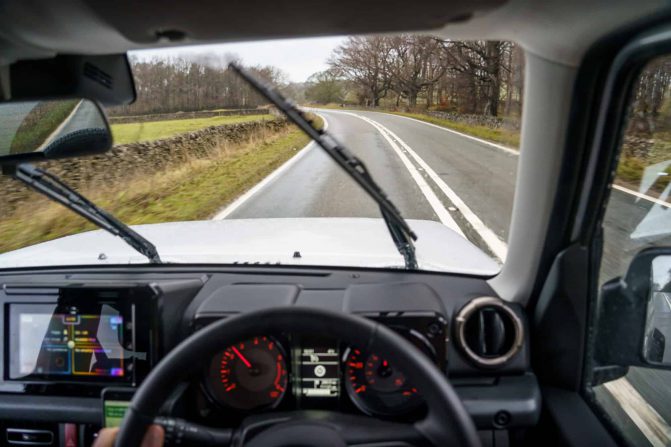Navigating roads filled with large vehicles – whether they’re HGVs, buses, or garbage trucks – requires a unique set of driving skills and heightened awareness.
The stakes are high because mishaps involving large vehicles often carry severe consequences. But how exactly can you enhance your safety and the safety of others when sharing roads with these giants?
Here are five tips that will keep you several steps ahead – and safe.
1. Maintain a Safe Following Distance
Large vehicles have longer stopping distances, especially under heavy loads or in poor weather conditions. Tailgating can drastically reduce your ability to react to sudden stops or changes in the traffic pattern.
As a rule of thumb, maintain at least a four-second gap between you and the large vehicle ahead – this distance should be increased during adverse weather conditions. This buffer allows you enough time not only to react and stop safely. It also provides a better view of the road ahead, helping you anticipate potential hazards more effectively.
2. Stay Out of Blind Spots
Large vehicles, such as buses and trucks, have significant blind spots known as No-Zones. These are areas around the vehicle where your car is virtually invisible to the driver. These zones typically exist on both sides of the vehicle, directly behind, and sometimes right in front.
It’s essential to recognize these danger zones and avoid lingering in them. If you can’t see the driver’s face in their side mirror, assume they can’t see you either.
Passing quickly and safely through these zones when necessary minimises risk and enhances visibility for everyone on the road.
3. Be Cautious at Intersections
Intersections are a hotspot for accidents involving large vehicles, particularly those making wide turns. It’s a practical manoeuvre to assume that trucks, including garbage trucks, might need extra room when they turn.
They often have to swing wide or start from the middle lane – so, whether you’re driving in London or Chicago, never try to squeeze in beside them or rush past just as they are manoeuvring. Otherwise, you could find yourself being involved in an accident and requiring the services of an experienced garbage truck accident lawyer.
Wait patiently and ensure the truck has completed its turn before you proceed. This awareness can prevent collisions and keep both drivers and pedestrians safe at these complex junctions.
4. Use Your Signals Early
Signalling your intentions early is crucial when sharing the road with large vehicles. This gives Heavy Goods Vehicles drivers and bus drivers, for instance, adequate time to react to your actions, enhancing safety for everyone involved.
Here are some key moments to signal ahead:
- Changing lanes. Indicate at least a few seconds before you start shifting.
- Turning at intersections. Signal well before reaching the turning point.
- Pulling over or slowing down. Early indicators can prevent a rear-end collision.
These simple habits can make a significant difference in preventing misunderstandings and accidents on the road.
5. Anticipate Stops and Slowdowns
Being pre-emptive in your driving approach, especially around large vehicles like HGVs and city buses, can significantly enhance road safety. These vehicles often make sudden stops or slow down unexpectedly due to their routes and the nature of their cargo.
Here’s how you can stay prepared:
- Monitor Traffic Ahead. Keep an eye on brake lights up the road, not just those of the vehicle directly in front of you.
- Listen for Hazard Signals. Sometimes drivers will use honks or hazard lights to indicate slowing down.
- Stay Alert at Known Stop Zones. Be particularly cautious near bus stops, loading docks, and construction areas where sudden stops are more likely.
Reacting swiftly to these cues keeps traffic flowing more smoothly and safely.



